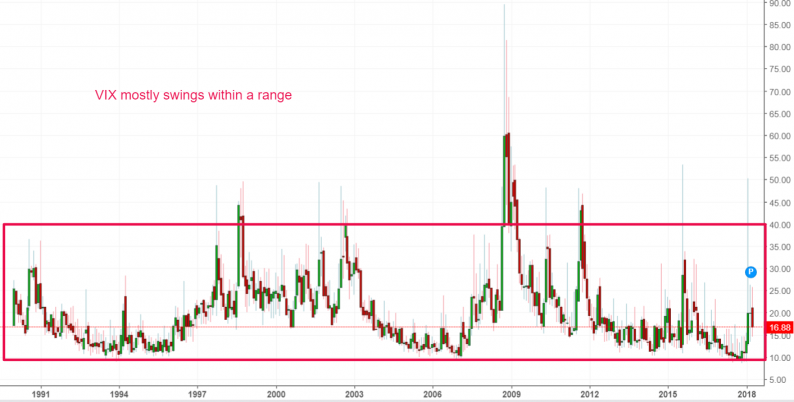Sentiment indicators are meant to demonstrate how a group of investors and traders feel about the markets.
The majority of sentiment indicators are “dumb money” sentiment indicators. These indicators become “optimistic” after the market goes up and “pessimistic” after the market does down. Hence, these are essentially used as contrarian indicators.
We’ve already said that sentiment indicators aren’t the best. But if you’re still interested in them, here are some common sentiment indicators for the stock market and other financial markets. Most sentiment indicators are designed for the stock market because it captures the majority of investors’ attention. Not many mom-and-pop investors trade forex and commodities.
Stock market sentiment indicators
The VIX (volatility index) is the most commonly used sentiment indicator for the stock market. VIX is essentially a “fear index”.
In other words, VIX tends to move inversely with the S&P 500 over the short-medium term.
VIX is based on options. VIX tends to swing within a range over the long run. It bottoms at around 10 and it rarely goes above 40.

This is a price-based sentiment indicator for the U.S. stock market. This is used as a “dumb money” contrarian indicator.
AAII Investor Sentiment Survey
AAII is one of the best survey-based sentiment indicators for the U.S. stock market. Every week AAII members are asked in what direction they think the U.S. stock market will go over the next 6 months. The results are compiled into Bullish, Neutral, and Bearish. Here’s what it looks like.












Leave A Comment